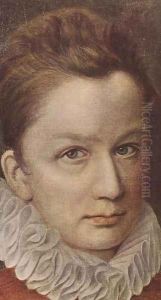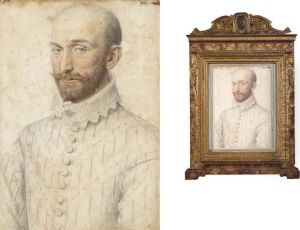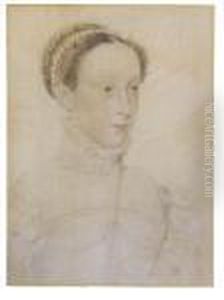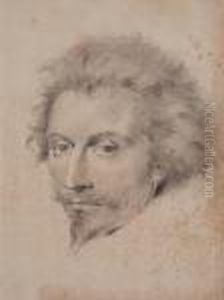Pierre Dumonstier Paintings
Pierre Dumonstier (also spelled Dumoustier or Dumoutier) was a French artist born into a family of artists in 1545. He is best known for his work as a portrait draughtsman. While the exact details of his early life and training are not well-documented, it is understood that he was part of the Dumonstier family, which included several notable artists who were active during the 16th and 17th centuries in France. His relatives, such as his brothers Cosme and Etienne and his nephew Daniel, were also accomplished artists, suggesting that his skill in art was nurtured within a familial context. Pierre Dumonstier himself is primarily celebrated for his remarkably detailed and delicate drawings.
Dumonstier's work was mainly focused on portraiture, and he was particularly renowned for his skill in capturing the likeness and character of his subjects. He worked during the reign of Henri IV of France and into the early part of the 17th century, a period that saw a flourishing of portrait art. This era in French history was marked by a heightened interest in individualism and the humanist focus on the individual, which is reflected in Dumonstier’s work.
Although he did not achieve the same level of fame as some of his contemporaries, Dumonstier's contributions to the art of portraiture were significant. His drawings are characterized by their fine lines and attention to detail, often utilizing chalks to create nuanced textures and depth. Among his known works, one of his most famous pieces is the portrait of the hand of the famous French noblewoman and patron of the arts, Catherine de' Medici. This drawing exemplifies his precise technique and his ability to convey not just physical likeness but also the status and personality of his sitter.
Pierre Dumonstier died in 1610. His legacy lives on through the handful of his drawings that have survived, which continue to be studied and admired for their craftsmanship and elegance. His work is held in various collections, including those of prominent museums, and serves as an important representation of French Renaissance portraiture.




